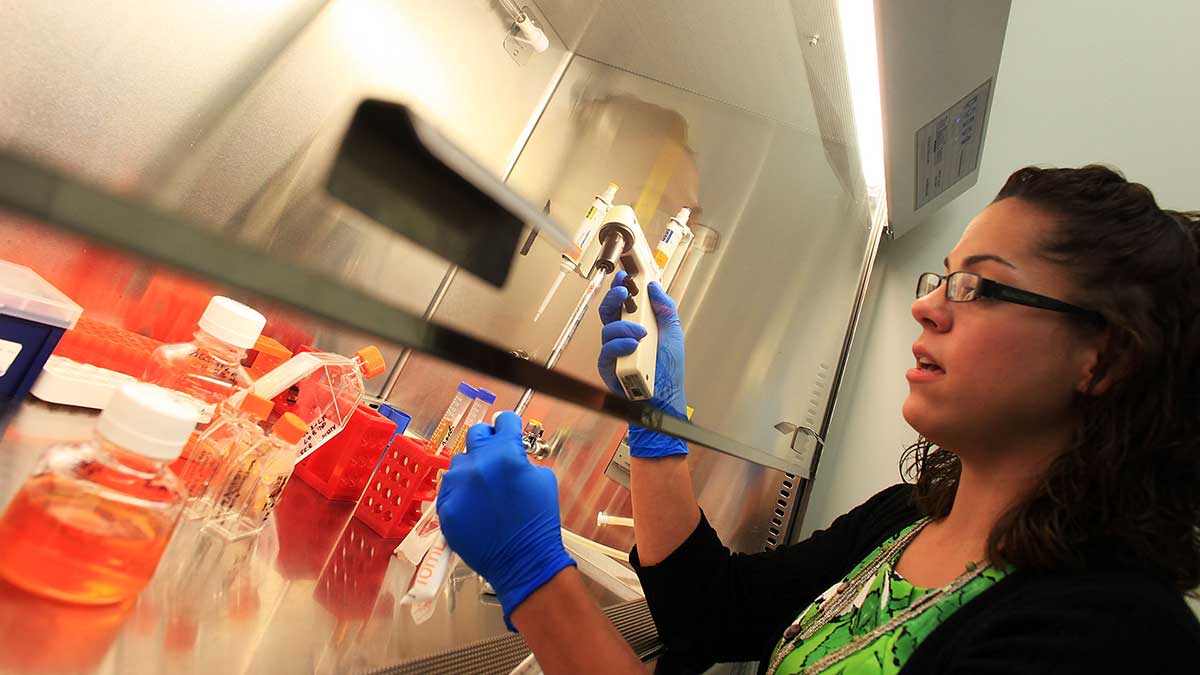Stem cell biotech companies welcome $150 million in decade-long funding

Stem cell research at the University of Connecticut. Pic: Spencer Platt / Getty
The ASX’s small cap biotech companies have welcomed new government funding for stem cell research, saying it would help Australian research catch up with the rest of the world.
Federal health minister Greg Hunt unveiled the 10-year Australian Stem Cell Therapies Mission earlier this week, aimed at supporting radical stem cell research for a range of conditions including heart disease, spinal cord injuries, strokes and kidney disease.
The $150 million injection will be drawn from the Medical Research Future Fund.
Dr Ross Macdonald, chief of Cynata (ASX:CYP), said the funding was crucial as Australia attempts to capitalise on its leading position in regenerative medicine.
“This is a very welcome initiative in the stem cell research and development sector and a much-needed one,” he told Stockhead.
“Given the major programs and legislation in countries like the US and Japan it is high-time Australia really got behind the clear strength in regenerative medicine and stem cell research here in our own country.”
Professor Melissa Little, the inaugural co-chair of the mission, told the Herald Sun it was an imperative to be developing stem cell technology in Australia.
Dr Macdonald agreed, saying that would benefit Australian patients, companies and investors.
“Government funding for biotech companies is so important and Cynata has benefited from government initiatives such as the R&D rebate, the Victorian Medical Research Acceleration Fund and of course our government-funded osteoarthritis clinical trial,” he said.
“This funding will enable companies such as Cynata to accelerate its research and studies in the stem cell space and to look more to having those activities conducted here in our own backyard.
“It has huge potential to change stem cell research and product development in Australia for the better. It could provide otherwise promising researchers and nascent stem cell companies with the lifeline they need to progress and develop what could be life-saving treatments.”
Mesoblast (ASX:MSB) boss Dr Silviu Itescu welcomed the Australian Government’s $150 million initiative, stating that the company is looking forward to working closely with the mission.
“We are committed to the commercialisation of cellular medicines for patients with intractable diseases with three products in late-stage development for advanced and end-stage heart failure, chronic low back pain, a major cause of opioid addiction, and the life threatening complication of a bone marrow transplant, acute graft versus host disease,” he said.
- Subscribe to our daily newsletter
- Join our small cap Facebook group
- Follow us on Facebook or Twitter
“We are very proud of our global leadership in this transformational approach to medicine and look forward to when it becomes mainstream treatment.”
Paul Anderson, managing director at Orthocell (ASX:OCC), said the funding was timely.
“Stem cell treatments are here to stay and form an important area of Australian research focus,” he said. “With little support from government previously Australia has punched above it weight. We have a vibrant and largely successful track record.
“This funding is an important step from government to assist in the development of these new class of treatments that can address unmet clinical needs and contribute to the development of skill sets required to translate the stem call approaches into the clinic and regulatory approval.”
Health Minister, Greg Hunt, said this mission will also find new hope for patients with dementia as stem cells can grow into brain cells and as a result may have the potential to repair brain damage caused by neurological conditions.
“Stem cell treatments applied through regenerative medicine, precision medicine and synthetic biology will provide new, targeted and more effective treatments,” Minister Hunt said.
“They will reduce the burden of disease on patients and carers. They will enhance equity in health care by addressing unmet clinical needs.
“Human stem cells are also currently being used to develop kidneys with functioning tissue as an alternative for renal replacement. This mission could fast-track the use of these kidneys in humans.”
SUBSCRIBE
Get the latest breaking news and stocks straight to your inbox.
It's free. Unsubscribe whenever you want.
By proceeding, you confirm you understand that we handle personal information in accordance with our Privacy Policy.








